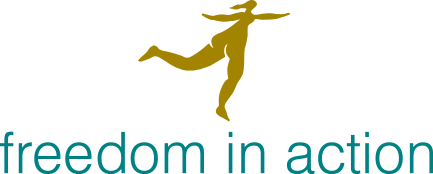A period of lying down each day should be thought of as an invaluable adjunct to all the attention and constructive thought you can give your use of yourself during the rest of your day. Your most comprehensive guide to Semi-Supine is the “Practising Poise” CD.
Lie on your back, with your knees raised and your head supported so that it is not falling backwards. Your Alexander Teacher can show you your correct support height if you don’t already know. Have your feet slightly more than hip-width apart, and comfortably close to your bottom, so that a minimum of effort is required to keep your knees aimed at the ceiling. Your hands can rest lightly somewhere on your lower chest or abdomen.
There are a number of overlapping reasons for lying down in semi-supine: to facilitate release throughout your musculature, to practice not tightening, to practice constructive thinking, and to practice making a connection between your intent and what you are actually doing….
Although it is best to aim for a “lie” lasting between 10 and 20 minutes, it is better to lie down for even just 5 minutes than not to lie down at all.
Lying down in the knees up/head supported position is a procedure whereby you can practise inhibition and direction (stopping and thinking). However, there are other occasions when it might be a good thing to do. One is if you are experiencing discomfort or pain in your back or neck, as it may have a palliative effect. The other is if you are fatigued. Lying in this position is mechanically a very constructive way of resting, and a short period spent in this way can prove quite reviving.
When you first start to lie down, your mind may be very busy or stimulated by all that you’ve recently been doing and thinking about. This can make it difficult to quietly attend to undoing and giving your directions. In these circumstances it’s worthwhile spending a few minutes just letting yourself quieten down. It may even be useful to have some quiet music to help, or your “Practising Poise” CD.
You are now ready for “Giving directions” – intent without “doing”
Your THINKING makes a difference! Your clearly focussed intent is the most effective tool you have for taking care of yourself.
Quietly run your mind’s eye around the contact that your back has with the floor. Resist any temptation to wriggle or adjust your position.
Instead, see if you can think your way out of any discomfort….
Quietly think your way around your body, giving your directions:
Allow your neck to be free, ie allow the muscles that run primarily up the back of your neck and attach to the back of your head, to soften and unclench and to lengthen; releasing right up into the back of your skull.
Allow your head to release forward and out around the end of your spine; your head hinges at the top of the spine, which is on a line precisely between your earlobes; you can soften around this head/neck articulation in such a way that your head is freer in relation to your neck and back.
Allow your back to lengthen and widen, ie allow the muscles that run along the length of your back to soften and unclench, and allow your back to “fan out” around your abdomen, and also through your shoulders and elbows.
Allow your legs to release out of your back. Invite the muscles that run from your hip-bones to your kneecaps to loosen. Allow your hip-bones (the front of the pelvis) to fall away from your legs, softening across the hip-joints and allowing the pelvis to meld with the rest of your back. Remember that your pelvis belongs to your back, not to your legs.
You are lying down in order to practice thinking, to practice focussing your intent, and to practice making the connections between your intent, ie what you want, and the way you are using yourself. Give time. (You are the only one that can do this!)
If you find that your attention has wandered, quietly bring it back to the contact you have with the floor, and to the business of giving your directions.
In letting go, however, you are not seeking to become floppy, or relaxed, in the conventional sense which often implies collapse. Your bones are still weight-bearing, and the muscular wrapping still needs to maintain a toned, energised state now, no less than when you are active. Your directions can help you energise and activate yourself, and distribute your energy in a strain-free way.
©M Stenning Canberra 1997

Recent Comments